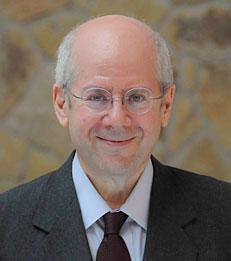Opinion
Bank Capital and Monetary Policy
—


Only with a healthy financial system will monetary policy be able to provide the stimulus necessary to return the economy to a path of strong, stable and balanced growth.
By Kim Schoenholtz and Stephen Cecchetti
Capital—the excess of assets over liabilities—determines solvency, so policymakers are used to thinking of it as a tool for keeping banks and the banking system safe. House Financial Services Chair Hensarling’s proposal to allow banks to opt for a simple capital standard that would substitute for other regulatory oversight is just the most recent example.
But bank capital also is a critical factor in the transmission of monetary policy. When central banks ease, their actions are intended to encourage banks to lend and firms to borrow. And, to put it simply: healthy banks lend to healthy firms, while weak banks lend to weak firms (if at all).
Macroeconomics textbooks of yore paid little attention to the proper functioning of the financial system and the role of banks in the transmission of monetary policy to growth and inflation. But the series of financial crises in the advanced economies—beginning with the bursting of Japan’s asset price bubbles in 1990—has changed all that. Today, explaining the interactions between the financial sector and the real economy is a major focus not only of research, but of textbook descriptions as well. Helping students understand how an impaired financial sector stifles the effectiveness of monetary policy is a key element in any intermediate macroeconomics textbook (see, for example, here).
Read full article as published by The Huffington Post.
___
Kim Schoenholtz is Professor of Management Practice in the Department of Economics and Director of the Center for Global Economy and Business.
But bank capital also is a critical factor in the transmission of monetary policy. When central banks ease, their actions are intended to encourage banks to lend and firms to borrow. And, to put it simply: healthy banks lend to healthy firms, while weak banks lend to weak firms (if at all).
Macroeconomics textbooks of yore paid little attention to the proper functioning of the financial system and the role of banks in the transmission of monetary policy to growth and inflation. But the series of financial crises in the advanced economies—beginning with the bursting of Japan’s asset price bubbles in 1990—has changed all that. Today, explaining the interactions between the financial sector and the real economy is a major focus not only of research, but of textbook descriptions as well. Helping students understand how an impaired financial sector stifles the effectiveness of monetary policy is a key element in any intermediate macroeconomics textbook (see, for example, here).
Read full article as published by The Huffington Post.
___
Kim Schoenholtz is Professor of Management Practice in the Department of Economics and Director of the Center for Global Economy and Business.
